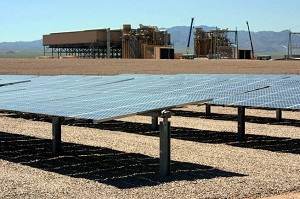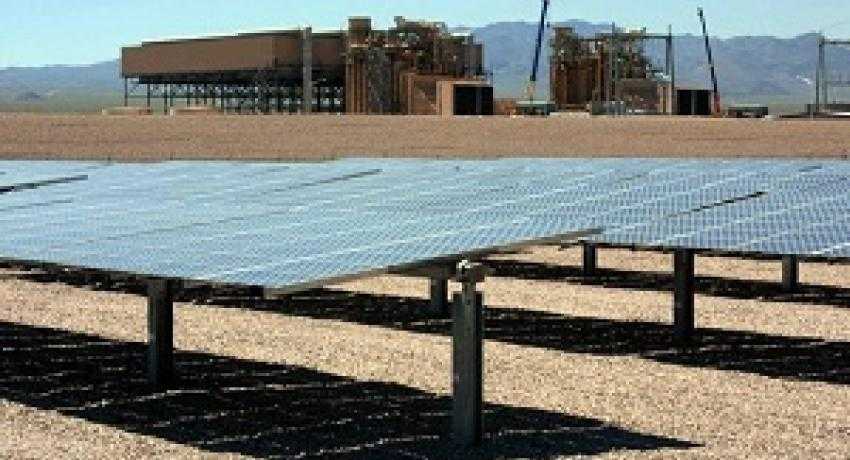In March solar accounted for all new utility power in US, a first
 In March of 2013 all 44 megawatts of new electric generation that utilities in the U.S. added to the grid consisted of solar power—a first for the booming industry. The Solar Energy Industries Association (SEIA) pointed out the achievement April 11 after the Federal Energy Regulatory Commission (FERC) released the March 2013 Energy Infrastructure Update.
In March of 2013 all 44 megawatts of new electric generation that utilities in the U.S. added to the grid consisted of solar power—a first for the booming industry. The Solar Energy Industries Association (SEIA) pointed out the achievement April 11 after the Federal Energy Regulatory Commission (FERC) released the March 2013 Energy Infrastructure Update.
The new power consisted of NRG Energy’s 26 megawatt Borrego Solar project, Las Vegas’ 3 megawatt Las Vegas Waste Water Treatment Plant Solar array, KDC Solar LLC’s 5 MW North Jersey Media Group Rockaway Solar, the 6 megawatt Kalaeloa Solar One in Honolulu County, the 1.9 megawatt Bosch Maui County Solar installation, BLU Leaf Energy Inc’s 1.15 MW Tanque Verde Unified School District Solar, and Weaver Cooke Construction’s 1.3 MW Greensboro Natural Science Center in Guilford County, North Carolina.
“This speaks to the extraordinary strides we have made in the past several years to bring down costs and ramp up deployment,” said SEIA CEO Rhone Resch. “Since 2008, the amount of solar powering U.S. homes, businesses and military bases has grown by more than 600 percent—from 1,100 megawatts to more than 7,700 megawatts today. As FERC’s report suggests, and many analysts predict, solar will grow to be our nation’s largest new source of energy over the next four years.”
While it helps that no other electric generation came on line in March, it’s also indicative of a growing trend in solar deployment—its becoming a larger part of all the new electric generation that’s being added in the U.S. In the first quarter of 2013, solar comprised 537 megawatts of the 1,880 megawatts of utility power brought online. That’s about 30 percent of the new generation capacity, according to SSEIA. Solar was only outpaced by wind, which added 958 megawatts of new generation capacity to the grid.
The report only covers larger generating facilities and not systems on homes or small businesses, which is worth mentioning. After all, “Net-metered systems account for more than half of all U.S. solar electric capacity,” SEIA said.
“In 2012, the U.S. brought more new solar capacity online than in the three prior years combined,” Resch added. “These new numbers from FERC support our forecast that solar will continue a pattern of growth in 2013, adding 5.2 GW of solar electric capacity.”
SEIA attributed the growth in solar partly to the dropping costs of PV, which has dropped by nearly 40 percent over the past two years. But other factors are also in play. For instance, renewable portfolio standards and renewable energy credits that have forced utilities to add in more solar. Investors and utilities are now getting more familiar with solar’s value, making it easier to finance them.




